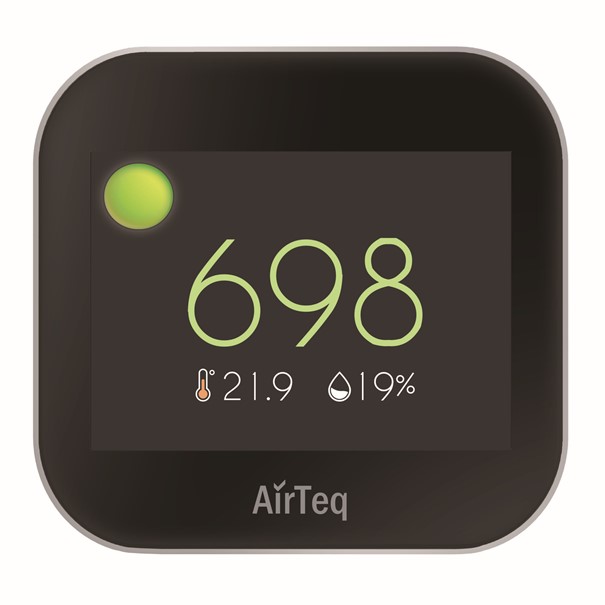How do you recognise a good CO2 monitor? That’s an important question now that the Consultation Committee has decided to “speed up and generalise the installation of CO2 monitors in all classrooms in schools and rooms in companies frequented by many people”.
CO2 monitor as a weapon against corona
Scientists have long stressed the importance of good indoor air quality in the fight against COVID-19. Since the corona pandemic, CO2 monitors have become mandatory in hotels, restaurants and pubs and in fitness centres. The idea is that soon there will be a CO2 monitor in every classroom and every business space.
Quality of indoor air
The quantity of carbon dioxide or CO2 is a measure of the air quality in a certain space. This is expressed in ‘ppm’ (parts per million). Poor air quality causes fatigue, stress, headaches and reduced concentration. With all the consequences this entails.
Since humans breathe out CO2, the CO2 level in a room rises when there are more people present, when people stay in a room longer and when there is a lack of ventilation. A high CO2 level therefore indicates an unhealthy air quality. If a person with corona is present in those circumstances, the risk of contamination of other people present increases enormously.
The Consultation Committee therefore recommends the use of a CO2 monitor. But how do you recognise a good CO2 monitor?

What do you need to consider when choosing a good CO2 monitor?
We list the most important characteristics of a good CO2 monitor below:
- Display: devices with a display offer the advantage that you can read off the values at any time. There are also CO2 monitors without a display. They give a signal when a threshold value is exceeded.
- Colours: it is not only handy to be able to see the values. It is even better if you can see at a glance whether the situation is okay or not. The threshold values are then linked to colour codes. Green stands for ‘healthy’, orange for ‘moderate’ and red for ‘unhealthy’. The most frequently used threshold values are:
- green or healthy: <800 ppm
- orange or moderate: 800-1200 ppm
- red or unhealthy: >1200 ppm
- Sound: in a classroom or work situation, it is not always possible to constantly monitor the CO2 monitor. A sound signal attracts attention and indicates the need for ventilation.
- Calibration method: if you do not wish to spend time regularly calibrating your device, then choose a self-calibrating or auto-calibrating CO2 monitor. These can be recognised from the label ‘NDIR CO2 monitor’.
- Measuring range: ensure the largest possible measuring range. In the case of a CO2 monitor, we recommend a minimum of 5,000 ppm.
- Measuring error: every measuring device, including a CO2 monitor, has a measuring error. Check carefully that this is as small as possible. Preferably less than 10%.
- Type: there are battery and mains-powered devices. Depending on the installation and the (possible) relocation, you should prefer one of the two types.
- Storing data: good devices not only measure the current situation, but also store data. This is useful for visualising and evaluating the CO2 values in the longer term. In this way, your prevention advisor can map out the ventilation needs more precisely.
Example of a good CO2 monitor: the Smart Sense Touch
The specialists of our Maintenance Masters division recommend the Smart Sense Touch (also known as the AirCheq Touch Pro by AirTeq). It not only measures the CO2 level. With the temperature and humidity, it monitors two additional factors that influence the quality of indoor air.
This user-friendly CO2 monitor meets all the above conditions. The Smart Sense Touch has a clear display with colour codes, emits an audio signal when a threshold value is exceeded, is self-calibrating and has a wide measuring range and low measuring error. It also stores data from up to 7,000 measurements. Thanks to this device, you always know when you need to ventilate.
Need advice?
Do you need advice on creating a healthy indoor climate? Contact Maintenance Masters.
